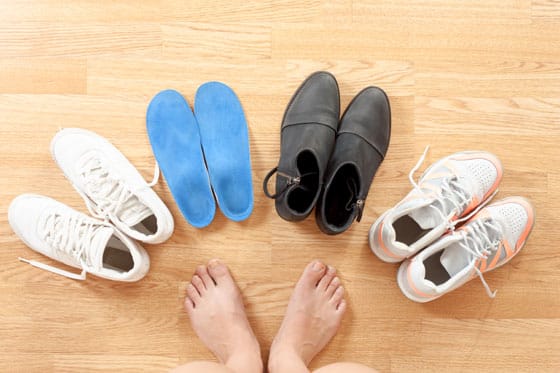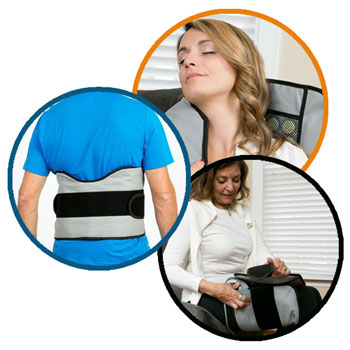
What are The Causes of Back Pain?
Back pain only has few possible causes. Knowing about these can help you a lot in identifying suitable treatment, or in steering clear from activities that contribute to your back pain.
- Muscle strain – heavy lifting and sudden movement made in an awkward position can easily strain the muscles and even the ligaments in your spine. People who are not physically fit often do not have the tolerance for constant strain in the back thus causing muscle spasms that can be very painful. Stretches for lower back pain can relieve pain causes by muscle or ligament strain.
- Ruptured disks – your spinal column is a series of bones or vertebrae. In between these bones are disks that prevent the bones from rubbing one another. These disks have a soft material in them that sometimes bulges out or even get ruptured. This bulging can press a nerve in the spine and can cause pain.
- Arthritis – osteoarthritis can easily affect the spine in such a way that is causes the narrowing of the space around the spinal cord. This can lead to sensitive nerves being subjected to pressure thus causing pain.
- Skeletal issues – there are times when one’ spine curves in an unusual way. Called scoliosis, when this curving is too severe this can cause back pain.
- Osteoporosis – the bones in your spine called the vertebrae can suffer from fractures as your bones become brittle and porous. Even small fractures in the back can cause immense pain. For people advanced in age this is one of the most common causes of back pain.
What Can You Do if You Have Back Pain?
The first thing you need to remember is that regardless of the harrowing stories of others when it comes to back pain these are often not applicable to you. Some simple exercises at home or over the counter drugs, even topical creams and cold compress are all you need to alleviate the pain. In most cases two weeks is all you need to get rid of the back pain completely.
One of the most common misconceptions about back pain is that bed rest can help. The opposite is quite true as medical practitioners today would even encourage physical activity to help with the pain in the long term. Keeping a steady dose of physical activity in the house and facing the pain head on can do more for you than lie in bed and avoid pain.
But What if The Pain Will Not Go Away?
Doctors often recommend medications to address the pain. Ideally medications are used for a limited period of time. Other sources of relief must be from long term back pain management. Medications used for back pain are over the counter drugs (OTC) like acetaminophen, non-steroidal anti-inflammatory drugs (NSAIDS) and also naproxen sodium. Most of these medications are ideal for acute back pain.
For chronic cases or when OTC drugs simply cannot help the pain doctors often prescribe muscle relaxants. This however can make you sleepy and dizzy. There are also cases when antidepressants are used. These drugs can significantly control pain in some cases of back pain and this has nothing to do with its effect on a person’s depression (depressed individuals are seen to be more prone to back pain).
More potent drugs like narcotics can also be prescribed by your doctor to control what would seem like an intolerable amount of pain. But this is done with the doctor’s careful supervision. Codeine or hydrocodone are the most common narcotics prescribed by doctors. These types of medications are only for a limited time only. In cases where back pain goes all the way down to the legs, injections of cortisone are initiated by the doctor to control inflammation around the nerves.
Back Pain Education, Surgery and Physical Therapy
Medications are often a quick-fix remedy for back pain but if you are looking for lasting back pain solutions then you need to know more about the following:
- Teaching yourself about back pain through reading online resources and by simply asking your doctors can really help in giving you a better understanding about your back pain issues. The key points of educating yourself about back pain are the need for an active lifestyle, developing skills and self awareness to actively root out stress and worries in your life, and even knowing more about things you need to do to avoid future injury.
- Contrary to popular belief, surgery to address back pain is not common at all and is only done in certain applicable cases. If your back pain goes down all the way to your foot and it is already causing muscle weakness in your lower extremities then surgery can be considered. Bone structural problems such as in the case of spinal stenosis (narrowing of the spine) or herniated disc can mean surgery is the only way to get to the bottom of one’s back pain.
- Physical therapy is at the very heart of treating back pain. There are a variety of treatments a physical therapist can use to address your back problems. Electrical stimulation and a number of muscle relax techniques are only two of the few treatments a physical therapist can recommend for you.
When your back pain symptoms improve, the therapist can then provide you with some inputs on stretches for lower back pain relief and other exercises that can increase the strength of your back and also improve your flexibility. Regular application of these exercises can also strengthen abdominal muscles and also improve your posture. This often results to sustained back pain alleviation.
Easy To Do Back Pain Exercises
Back pain exercises are very easy to do. You can even do these in the comfort of your own home. The following stretches for upper back pain are proven to alleviate back pain symptoms when done regularly.
- Bottom to heels stretch – start this exercise by kneeling on all fours and making sure your knees are aligned to your hips and your hands are directly under your shoulders. Be careful not to overarch your lower back. Also be careful to extend your neck and your shoulders should not be locked to your elbows. Slowly take your bottom backwards to your heel without changing the natural curve of your back. Hold the stretch and take one deep breath. Return to your original position. Repeat this 8-10 times. Do not forget not to sit on your heel, and to stretch only to a point that you are comfortable. It also helps if you can see yourself in the mirror to make sure your form is correct when doing the exercise.
- Knee rolls – start the exercise by lying on your back. Put a small cushion under your head to get the right optimal position for this exercise. Bend your knees together and make sure your body is relaxed especially in your upper extremities. Also get your chin tucked in. Roll your knees to one side and make sure you pelvis also follows the action. Hold the stretch with one deep breath and return to your original position. Do the stretch again but on the other side this time. Repeat this exercise 8-10 times. Again do not push your body so far. For additional comfort you may want to put a pillow in between your knees.
- Back extensions – this exercise is one of the most subtle stretches for upper back pain but can do a lot for the alleviating back problem symptoms. Start this by lying on your stomach, propping your torso up with your elbows, which lengthens your spine. Be sure to keep your shoulders back and your neck extended out. By maintaining your neck position, arch your back by pushing down on your hands. This action should let you feel a gentle stretch in your stomach area. Breathe in and hold the position for up to 10 seconds. Return to your original position and repeat the action 8-10 times. Do not forget to keep your hips grounded and never bend your neck backwards.
The presented stretches for back pain can provide the relief you need but only if these exercises are done regularly. In cases when these do not help with your pain, it is best to consult your doctor.











